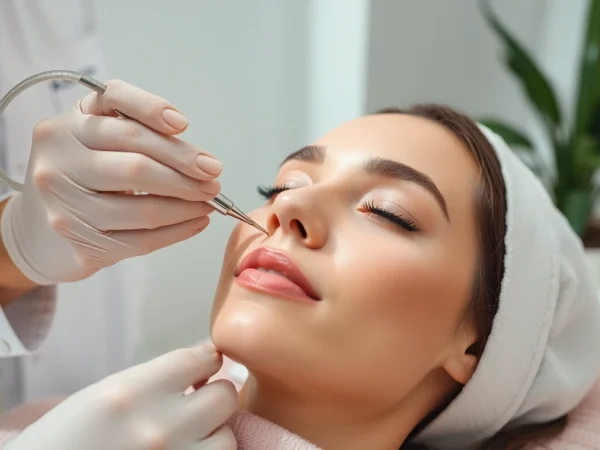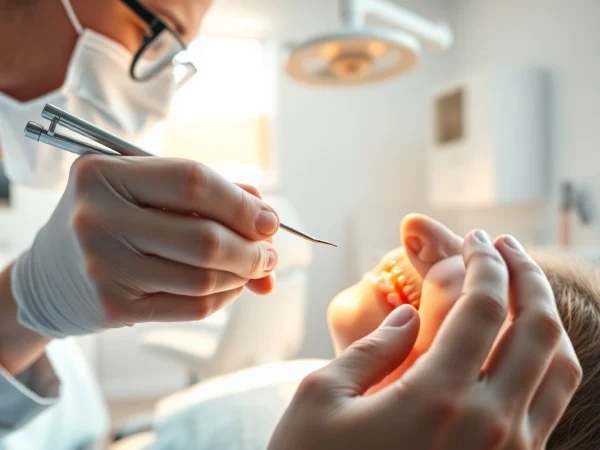Understanding PDO Threads: The Key to Non-Surgical Facelifts
What Are PDO Threads?
Definition and Overview of PDO Threads
PDO threads, composed of Polydioxanone, are biodegradable sutures that have gained prominence in the aesthetic medicine industry for their unique ability to lift and tighten sagging skin without the need for invasive surgery. Originally utilized in surgical procedures to close wounds, the application of PDO threads has expanded to aesthetic techniques aimed at rejuvenating the face and neck. PDO threads work through a dual action of providing immediate lift as well as stimulating the body’s natural collagen production, which supports and sustains skin elasticity over time. Many patients are drawn to this treatment for its relative simplicity in comparison to traditional facelift surgeries, appealing to those seeking minimally invasive alternatives for facial enhancement. To explore the application and benefits of PDO threads, understanding their mechanism of action is crucial.
How PDO Threads Work for Skin Lifting
PDO threads achieve skin lifting through insertion beneath the skin’s surface in targeted areas such as the cheeks, jawline, and neck. When these threads are placed, they create a scaffolding-like effect that immediately lifts the surrounding tissue while also inciting the body’s healing response. As the threads dissolve, a natural increase in collagen and elastin production occurs, which enhances the skin’s firmness and elasticity over time. This dual mechanism is one of the key attributes that sets PDO thread lifts apart from other non-surgical treatments. As the threads dissolve over six months, they stimulate natural healing processes that continue to enhance skin quality long after the procedure.
Common Misconceptions about PDO Threads
Despite their popularity, PDO threads are often surrounded by misconceptions that can deter potential patients. One common myth is that the procedure is excessively painful; however, most patients report only mild discomfort, as a local anesthetic is typically used during the treatment. Another misconception is that PDO threads provide permanent results; while they do stimulate collagen production, the threads themselves dissolve over time, leading to gradual changes in the skin. Additionally, many people believe that PDO threads can only be used for the face, but they can be effectively utilized for body contouring and tightening as well. Addressing these misconceptions can empower individuals to make informed decisions about their aesthetic preferences.
The Benefits of PDO Threads in Aesthetic Treatments
Immediate Effects and Long-Term Skin Health
One of the most attractive aspects of PDO threads is the immediate results they provide. Patients often see a noticeable lift in their skin right after treatment, contributing to a rejuvenated appearance that can last for months. However, beyond this immediate effect, the long-term benefits are even more significant. The collagen induction facilitated by the threads fosters improved skin texture and elasticity, helping to address fine lines and wrinkles over time. This proactive approach to skin health makes PDO threads an appealing choice for anyone seeking not just a quick fix but rather a longer-lasting enhancement to their appearance.
Comparison of PDO Threads with Other Treatments
When evaluating non-surgical options for skin rejuvenation, PDO threads stand out when compared to alternatives like dermal fillers and Botox. While fillers add volume and Botox temporarily paralyzes muscles to reduce wrinkles, PDO threads provide structural support and stimulate collagen production, offering a more holistic approach to skin rejuvenation. Unlike these other treatments, PDO threads also lift the skin, giving a more sculpted and youthful contour. Each treatment has its unique advantages; however, those looking for comprehensive lifting and rejuvenation may find PDO threads to be a superior choice.
Who Can Benefit from PDO Threads?
PDO thread lifting is particularly beneficial for individuals experiencing mild to moderate skin laxity as a result of aging or weight loss. Ideal candidates usually fall within the 30 to 60 age bracket, where early signs of aging manifest as subtle drooping in the cheeks and jawline. It’s also a desirable option for patients who are not ready for surgical intervention but seek significant results. Those who prioritize natural-looking enhancements often opt for PDO threads, as they offer gradual changes rather than dramatic transformations.
The PDO Threads Treatment Process Explained
Consultation: What to Expect
The journey for PDO thread treatment begins with a comprehensive consultation. This initial meeting is essential for assessing a patient’s skin condition, discussing aesthetic goals, and examining medical history. During this phase, practitioners will often explain the procedure, address any concerns, and educate patients on what to expect, including aftercare instructions. It’s an excellent opportunity for individuals to voice their desires and discuss any previous cosmetic experiences that may influence their expectations. The importance of finding a qualified practitioner cannot be overstated as it significantly impacts the overall experience and results.
The Procedure Step-by-Step
- Preparation: The area being treated will be cleaned and marked for precision in thread placement.
- Anesthesia: A local anesthetic is applied to minimize discomfort during the procedure.
- Thread Insertion: A thin cannula or needle is used to insert the PDO threads into the superficial layers of the skin. The practitioner will strategically place the threads in areas requiring lift and support.
- Thread Positioning: The threads are gently pulled to lift and reposition the tissues. This allows the practitioner to assess the effectiveness of the lift and make necessary adjustments.
- Finishing Touches: After achieving the desired lift, the providers will trim the threads, which will dissolve over time. Patients may be given ice packs to minimize any immediate swelling or discomfort.
The entire procedure typically takes between 30 to 60 minutes, depending on the areas being treated. It is relatively quick, making it a suitable option for those with a busy schedule.
Post-Treatment Care and Recommendations
Post-treatment care is crucial for maximizing results and ensuring a smooth recovery. Patients are often advised to avoid strenuous exercise and facial massages for at least 2 weeks following the treatment. Sun exposure should be limited, and maintaining a proper skincare regimen is encouraged. Many practitioners recommend the use of gentle products to assist with healing and to promote healthy skin turnover. Regular follow-ups can help track progress and address any concerns that may arise as the threads begin to dissolve and the collagen production kicks in.
Potential Risks and Side Effects of PDO Threads
Understanding Possible Reactions
As with any cosmetic procedure, PDO threads may come with potential risks and side effects. While most patients report minimal discomfort, possible reactions include mild bruising, swelling, or redness at the insertion sites. In some cases, patients may experience unevenness in their skin post-treatment, which can often be remedied through adjustments during follow-up visits. Rare complications might involve infection or allergic reactions, emphasizing the importance of meticulous technique and hygiene standards during the procedure.
Who Should Avoid PDO Threads?
While many can benefit from PDO thread lifts, certain individuals may need to avoid the treatment. Those with active skin infections, significant skin laxity requiring surgical intervention, or certain medical conditions—such as bleeding disorders—should consult their healthcare provider before proceeding. Pregnant or breastfeeding women might also want to refrain from undergoing PDO treatments, as limited studies exist around safety during these periods. Pre-existing conditions must be disclosed during the consultation to ensure a tailored treatment approach.
Managing Expectations: Recovery Time and Results
Understanding the recovery process and managing expectations are pivotal for patients considering PDO threads. Most individuals return to their normal daily activities within a few days, though some may experience slight discomfort or swelling that can last a week. As results continue to develop over the months following the treatment, careful monitoring and realistic expectations can enhance patient satisfaction. Many find that their result, which offers both immediate and progressive improvement, contributes significantly to their self-esteem and overall satisfaction with their appearance.
Choosing a Qualified Practitioner for PDO Threads
Looking for Credentials and Experience
Finding a qualified practitioner is critical for ensuring a successful PDO thread lift procedure. Prospective patients should seek board-certified professionals with extensive experience in the industry and specific training in PDO thread techniques. A reputable practitioner will hold the necessary credentials and be transparent regarding their levels of experience and success rates. Consider checking reviews or before-and-after photos, as these visual aids can provide insight into both the practitioner’s skill and patient satisfaction.
Questions to Ask During Your Consultation
Being prepared with questions for your consultation can greatly assist in understanding the PDO thread treatment and alleviating concerns. Inquiries may include:
- What is your experience with PDO threads specifically?
- How many procedures have you performed?
- Can you show me before-and-after photos?
- What should I expect in terms of recovery time?
- Are there any specific preparations I should make prior to treatment?
By engaging the practitioner with these questions, you can gain a deeper understanding of the methods and their personalized approach, which will contribute to a more satisfying experience.
Identifying Authentic Reviews and Feedback
In the age of digital media, online reviews can significantly influence choices regarding aesthetic treatments. However, distinguishing authentic feedback from exaggerated testimonials can be challenging. Patients should look for reviews on multiple platforms, focusing on those that provide detailed accounts of experience. Seeking out patient testimonials that mention both positive and negative aspects helps create a realistic picture of what to expect. Moreover, discussing experiences with friends or family who have undergone similar procedures can aid in establishing trust with practitioners and enhancing overall comfort with the treatment process.










